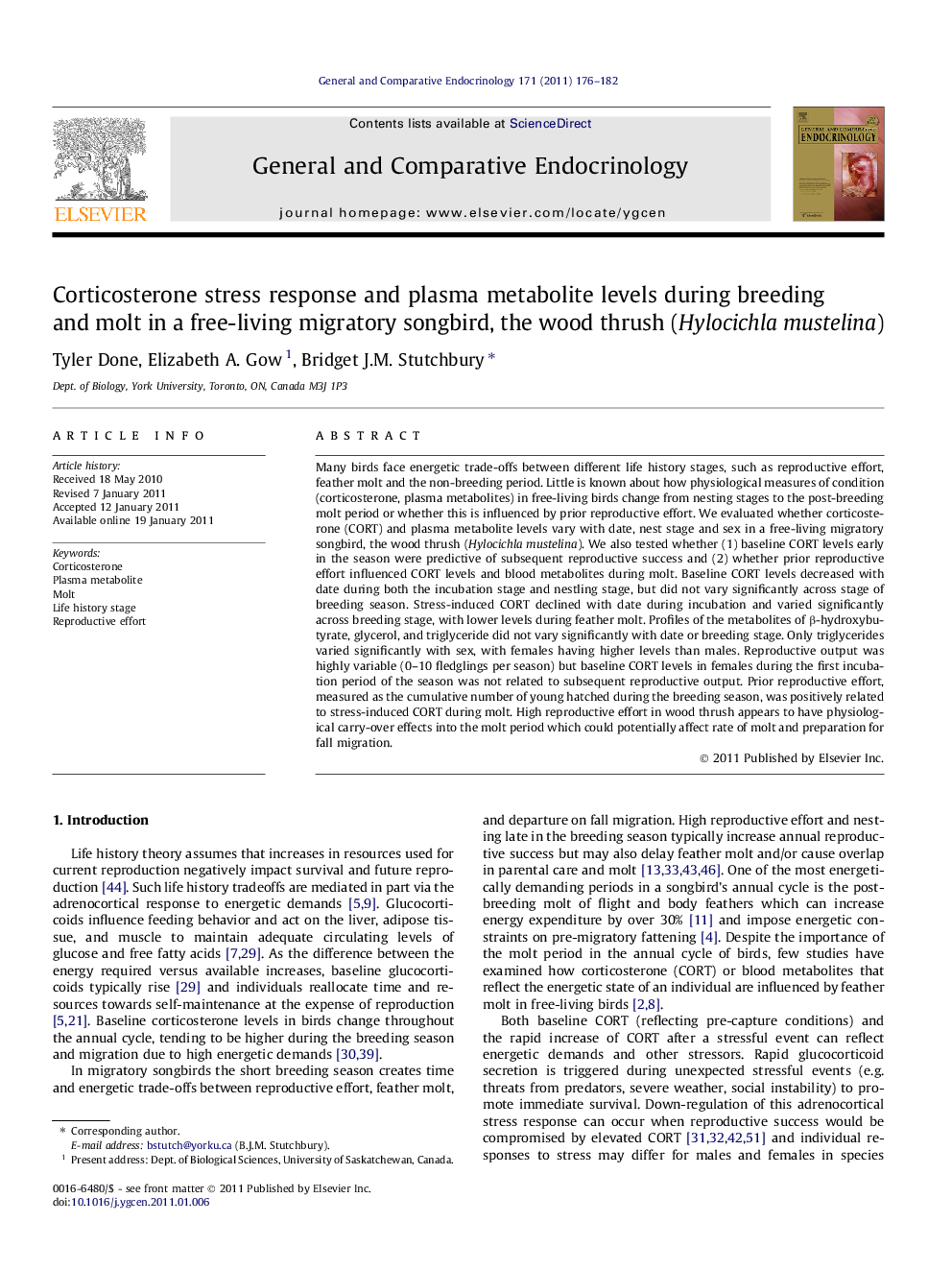| Article ID | Journal | Published Year | Pages | File Type |
|---|---|---|---|---|
| 2800935 | General and Comparative Endocrinology | 2011 | 7 Pages |
Many birds face energetic trade-offs between different life history stages, such as reproductive effort, feather molt and the non-breeding period. Little is known about how physiological measures of condition (corticosterone, plasma metabolites) in free-living birds change from nesting stages to the post-breeding molt period or whether this is influenced by prior reproductive effort. We evaluated whether corticosterone (CORT) and plasma metabolite levels vary with date, nest stage and sex in a free-living migratory songbird, the wood thrush (Hylocichla mustelina). We also tested whether (1) baseline CORT levels early in the season were predictive of subsequent reproductive success and (2) whether prior reproductive effort influenced CORT levels and blood metabolites during molt. Baseline CORT levels decreased with date during both the incubation stage and nestling stage, but did not vary significantly across stage of breeding season. Stress-induced CORT declined with date during incubation and varied significantly across breeding stage, with lower levels during feather molt. Profiles of the metabolites of β-hydroxybutyrate, glycerol, and triglyceride did not vary significantly with date or breeding stage. Only triglycerides varied significantly with sex, with females having higher levels than males. Reproductive output was highly variable (0–10 fledglings per season) but baseline CORT levels in females during the first incubation period of the season was not related to subsequent reproductive output. Prior reproductive effort, measured as the cumulative number of young hatched during the breeding season, was positively related to stress-induced CORT during molt. High reproductive effort in wood thrush appears to have physiological carry-over effects into the molt period which could potentially affect rate of molt and preparation for fall migration.
Research highlights► Stress-induced CORT was lowest during feather molt in the wood thrush. ► Females had higher triglyceride than males suggesting lower energetic needs. ► CORT during the first incubation was not correlated with subsequent fitness. ► CORT response to a stress during molt was higher if individuals had high reproductive effort.
